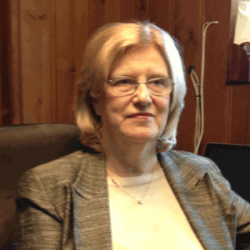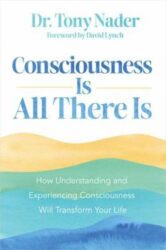How to Find Bliss in Everyday Life

“Absolute bliss consciousness belongs to the depths of everyone’s heart.” —Maharishi Mahesh Yogi
We all know what it feels like to have a peak experience, an abundance of joy, or even bliss or clarity that transcends the ordinary. These are moments when we feel fully alive, performing at a high level, in tune, or “in the zone.”
But what if we could have more of these experiences in our daily lives? What if we could live at this peak level, not just visit it occasionally?
The philosophy of life is this: Life is not a struggle, not a tension. Life is bliss. It is eternal wisdom, eternal existence.
— Maharishi
In the West, one of the pioneers exploring these transcendental experiences was the famous American philosopher and psychologist, Abraham Maslow, who coined the term “peak experience” in the 1960s. He studied people who seemed to have a high level of well-being and fulfillment, whom he called “self-actualizing.” He found that these people had frequent and intense experiences, which he described as “the private, personal illumination, revelation, or ecstasy of some acutely sensitive prophet or seer.” He also noted that transcendent moments of pure joy and elation were often associated with these spiritual or mystical states of consciousness.
That which is truth, is consciousness, is bliss, is the ultimate reality.
— Bhagavad Gita
Maslow believed that peak experiences were indicators of our psychological health and growth. And as we reach the highest level of self-actualization, we experience more transcendent moments and even “plateau experiences,” which are longer periods of bliss, oneness, and harmony.
However, Maslow did not provide a method for achieving self-actualization. He acknowledged that moments of bliss were rare and unpredictable. He wondered if there was a way to systematically develop the capacity for higher states of consciousness.
This phenomenon is what some neuroscientists have been exploring for decades. They have discovered that these kinds of intense experiences are not just occasional random events, but natural expressions of our human potential. They have also found that there are ways to cultivate them.
Sage of enlightened vision
Maharishi Mahesh Yogi brought to light the knowledge of deep meditation (Transcendental Meditation) as a means to achieve inner happiness, freedom from stress, enhanced creative abilities, and the growth of self-realization. (1) Maharishi said, “Life is bliss; it is unbounded deep within and it is full of boundaries outside.” He advised people to turn their attention within, experience that unbounded blissful wholeness of life, and bring the mind out fully saturated with that—start to live unboundedness in the field of boundaries.
Transcendental Meditation (TM), is a simple technique that allows the mind to settle down to its most expanded state of awareness, characterized by inner silence and pure bliss. At that time during TM, research shows increased EEG coherence and alpha waves in the brain. The goal of the Transcendental Meditation technique is the state of enlightenment, the fulfillment of human potential—the birthright of everyone.
Modern research has shed light on this quest.(2) Using advanced technologies such as EEG and fMRI, scientists have been able to measure the brain activity of people who have peak experiences. They have found that these experiences are characterized by increased coherence and alpha waves in the brain, which indicate a state of relaxed alertness, bliss, clarity, and integration.
Neuroscientist Dr. Fred Travis explains:
“The experience of the transcendent is not unique to TM practitioners or peak performers; it’s unique to human beings. It’s what we experience when the activity of feeling and thinking and perception settle down and the mind experiences its most expanded state of awareness. It’s the experience of pure unbounded consciousness and it’s available to anyone.”
According to Maharishi, in his status as a great sage and scientist of consciousness, enlightenment is nothing but the natural state of living at the peak. He says:
“In the most natural manner everybody has every right to enjoy permanent peace, bliss eternal which is the nature of his own soul.”
Maslow also came to a similar conclusion:
“The great lesson from the true mystics {is that} the sacred is in the ordinary, that it is to be found in one’s daily life, in one’s neighbors, friends, and family, in one’s backyard.”
So how can we find bliss in everyday life? The answer is simple: by cultivating our inner potential through TM,(3) we can experience more joy and clarity in every moment until the peak experience is our permanent reality. We will discover that the extraordinary is always within us, waiting to be revealed. Without the knowledge of its basis, absolute bliss consciousness, life is like a building without a foundation. As Pierre Teilhard de Chardin (scientist and philosopher) puts it: “We are not human beings having a spiritual experience. We are spiritual beings having a human experience.”
1. Journal of Humanistic Psychology
1976 The effect of the TM technique in reducing negative personality traits and increasing self-actualization was marked and cumulative.
2. Journal of Counseling Psychology
1973 Changes on several measures in the direction of self-actualization were shown to occur in subjects practicing the TM technique after just 10 weeks.
3. Journal of Counseling Psychology
1972 People practicing the TM technique after just 2 months showed increased self-actualization as compared to controls.
ENJOY MORE BLISS: REACH OUT TO YOUR LOCAL TM TEACHER
About the Author
Vanessa Vidal is the national director of TM for Women in the USA





